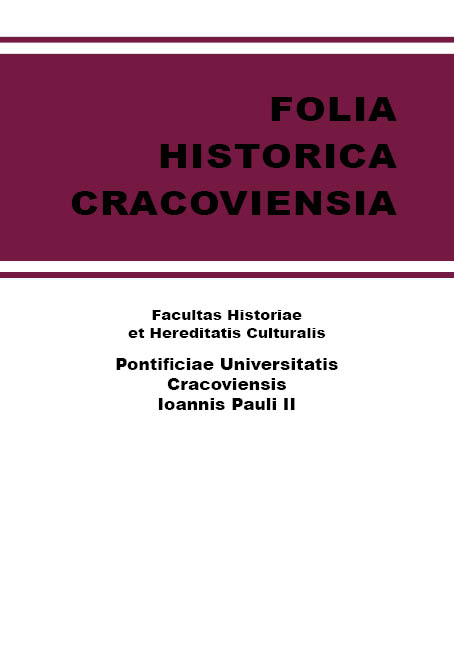Zmiany w wyposażeniu architektoniczno-rzeźbiarskim
klasztoru czerwińskiego w pierwszej połowie XVI wieku
Changes to the architectural and sculptural furnishings of monastery in Czerwińsk in the first half of the XVI century
Author(s): Ewa KorpyszSubject(s): Christian Theology and Religion, Visual Arts, Sociology of Art, Sociology of Religion
Published by: Wydawnictwo Naukowe Uniwersytetu Papieskiego Jana Pawła II w Krakowie
Keywords: monastery of Czerwińsk; Renaissance sculpture; sacrarium; Giovanni Cini;
Summary/Abstract: The church and the monastery of the Canons Regular of the Lateran in Czerwińsk was erected before the first half of the XII century and rebuilt in the years 1524–1538, on the initiative of the abbot Jakub Kula. Following the reconstruction, the church gained vaults and poly-chrome decoration in the chancel, windows and portals received profiled stone frames with transitional Gothic-Renaissance forms, while the refectory of the monastery was decorated with rib vault. The remains of the stone framing of the sacrarium, today in a badly damaged state, originate from this period as well. They include the relics of finely decorated pilasters, precisely carved arabesque candelabra and a part of the tympanum with the motif of the lamb lying on the book and collecting the blood into the cup. Unlike other details and framings, the decoration of sacrarium is advanced in terms of style and close to the Italian motives and patterns, known from Kraków. Such elements are a proof of the high class of the monument, visible despite its damaged state, and show the expertise of the artist. Similarities of the ornament direct our attention toward another object, the sacrarium in Gdów, built probably in the second quarter of the XVI century, in the workshop of Giovanni Cini of Siena, employed earlier in the constructions of Sigismund Chapel in Kraków (kaplica Zygmuntowska).Renovation works in Czerwińsk coincided with the construction of the cathedral in Płock, led by Bernardino de Gianotis, Giovanni Cini and Filippo of Fiesole. In 1532, Cini returned to Poland after a three-year stay in Siena, and could take on new orders. It is possible that the abbot Kula, who commissioned the renovation of the monastery at this time, aware of the presence of Italians in Płock, took advantage of their experience in design, selection of ornamental motifs and their expertise in the execution of the work itself.
Journal: Folia Historica Cracoviensia
- Issue Year: 22/2016
- Issue No: 1
- Page Range: 157-172
- Page Count: 16
- Language: Polish

